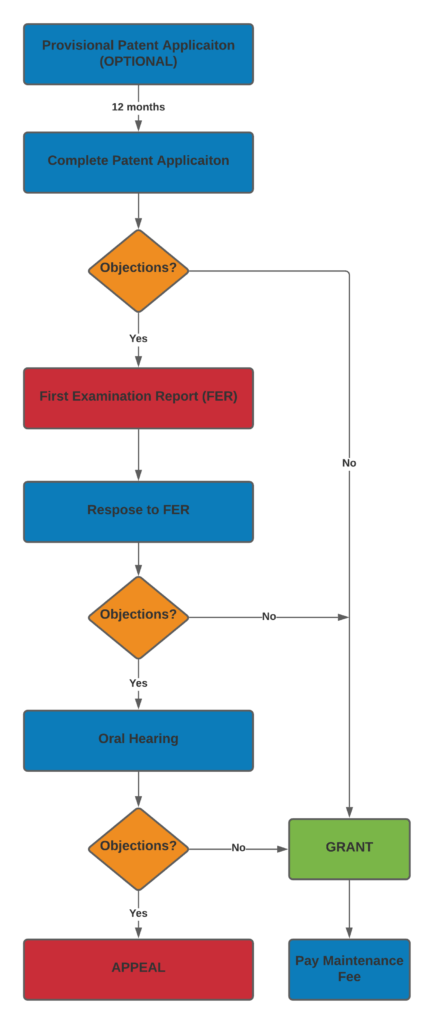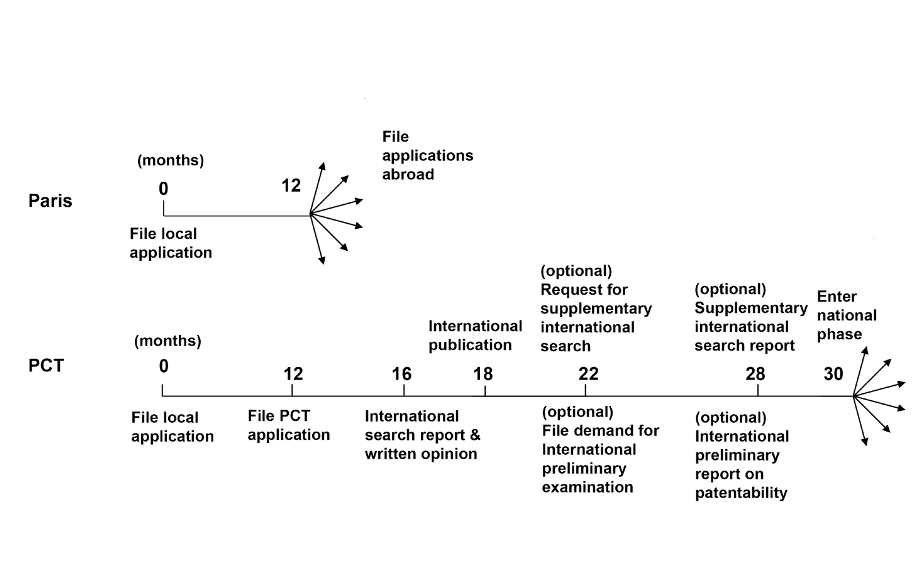Patents
Patent overview
Patenting your invention is unarguably the first and foremost step you should take to protect your inventions from intellectual property theft. Many times, inventors don’t even realize the value of their creation and end up publishing it without taking adequate measures to protect their ideas from infringement. Once you publish your idea in the public domain without protecting it legally, you may lose all your rights over it.
Be it engineering solutions, product ideas, scientific publications, or academic papers, evaluating the possibility of protecting your intellectual property is the first step you should take to protect your interests. A basic understanding of patent law requirements will be adequate to determine if your idea is patentable or not.
Remember that patents are not the only form of intellectual property. Your creation may be entitled to other forms of IP including copyrights, and industrial designs. In some cases, you may even consider keeping your solution a trade secret. To understand which form of IP suits your needs, you may go through the FAQs on patents from here, trademarks from here, copyrights from here, and industrial designs from here. Alternatively, you can talk to us so that we can suggest you the best solution. Click here or fill out our contact form to schedule a consultation with our team.
Patent process
The three primary requirements for patenting your invention include
(i) Your idea should fall within the category of patentable subject matter
(ii) Your idea should be novel and non-obvious.
(iii) Your idea should have an industrial application.
You may have to go for a patentability search to make sure that your idea is novel and non-obvious. Upon determining that your idea is patentable, you may proceed with drafting and filing your patent application.
The following flowchart depicts the patent process in India.
NB: This is a simplified flowchart created to provide a basic understanding of the patent process. The flowchart does not include opposition proceedings.
The following flowchart depicts the patent process in the US
NB: This is a simplified flowchart created to provide a basic understanding of the patent process. For a detailed understanding of the process, feel free to contact us.


Since Intellectual Property Rights are important for businesses across the world, the World Trade Organization has made sure that the law and process of protecting IP such as Patents and trademarks are similar across all signatory countries. Therefore, you will mostly be going through a similar process when you try to extend your IP protection across multiple jurisdictions.
International patents
The three primary requirements for patenting your invention include
(i) Your idea should fall within the category of patentable subject matter
(ii) Your idea should be novel and non-obvious.
(iii) Your idea should have an industrial application. Technically speaking, the concept of international patents doesn’t exist. Patent rights are country-specific. Nevertheless, the WIPO has come up with different solutions for individuals and companies who wish to extend their patent protection beyond their home country.
A utility patent application can be filed in multiple jurisdictions using two means:
Option 1: Paris Convention Filing
Option 2: Patent Co-operation Treaty (PCT) Filing
Option 1: Paris Convention Filing Process: File each application separately in each jurisdiction by claiming priority to the priority application (irrespective of whether the first filing was provisional or non-provisional).
Deadline: File in interested countries within 12-months from the priority date (date of first filing irrespective of whether the first filing was provisional or non-provisional).
Option 2: PCT Filing
Process:
A two-step phase is applicable here, the first phase relates to international filing and the second phase relates to the National phase. Important Abbreviations:
RO: Receiving Office – Where you choose to file the PCT application
ISA: International Search Authority (ISA) – Patent office you chose to perform a search and examination
NP: National Phase (Second Phase)
Phase I: File an international application (could be initial/first filing or an application claiming priority over the first filed provisional application) at an RO of your choice. WTO has authorized a few patent offices to act as ROs. For example, USPTO (USA), EPO (EU), JPO (Japan), IPOS (Singapore), IPO (India), etc., are some authorized ROs.
You must do the initial filing via one of these offices. You should also select the list of jurisdictions where you want to extend this PCT application during the second phase (National Phase). You must select an ISA for examining your application. You should pay the international filing fee, transmittal fee, and International Search Fee. The search fee depends on the ISA you select and varies widely. The catch is, if you choose USPTO as the ISA, they charge less for the prosecution during PHASE II.
Phase I is called the international filing phase upon filing and payment of the initial phase.
Phase II:
Upon completion of phase I, you will receive a search report for your application from the chosen ISA. You may proceed with prosecution in the chosen ISA after receiving the search report. If you choose to enter the national phase in other countries, you must do the same within 30 months of the priority date (first filing date, not the PCT filing date). Once you enter the national phase, you must pay the search/examination fee for each country and follow the usual prosecution process.
Pros: Single filing at the initial stage. Saves money initially. 30 months from the priority date to enter the national stage. If the first filing was PCT, one gets 30 months to evaluate if the patent has a chance of being granted before entering the national phase in other countries. You may have to go for a patentability search to make sure that your idea is novel and non-obvious. Upon determining that your idea is patentable, you may proceed with drafting and filing your patent application.

Services provided by Acura IP
-Patentability search/opinion
– Invalidation search/opinion
– Freedom to operate search/opinion
– Patent Landscaping
– Patent Claim Mapping
– Provisional patent drafting and filing
– Complete or non-provisional patent drafting and filing
– Patent prosecution
– Patent hearings
– Patent opposition matters


